varicose veins orvenous thrombosis- this is a systematic pathological change in the veins, which is accompanied by expansion, elongation, bending and formation of nodules, due to which the work of the venous valves is disturbed and the blood flow is disturbed.

A change in blood flow almost always leads to changes in the body. The movement of blood in the veins depends not only on the condition of the vascular wall, but also on the condition of the venous valve, the work of which creates the movement of blood, regulates the direction and strength of flow.In healthy veins, there is a certain balance between the thickness of the vein, the tone of the vein and the activity of the valve.. When one of these elements changes, the load on the others increases. For example,when the valve fails, blood flow slows down, a larger volume of fluid begins to accumulate in the veins, due to which the load on the walls increases, which then lose their elasticity and stretch. All of these changes can lead to stagnation of blood in the lower extremities, resulting in inflammation, pain, and swelling due to tissue malnutrition.
Symptoms of varicose veins
Pain is one of the earliest symptoms that can occur at any age and should be treated.
- In stage 1:There is discomfort at the end of the working day, there may be tingling and burning in the legs. This indicates an increased load on the venous system of the legs.
- In stages 2 and 3:the appearance of traction pain and cramps in the calf muscles.
- In 4 stages:Severe pains of a tense and arched character that cause lameness.
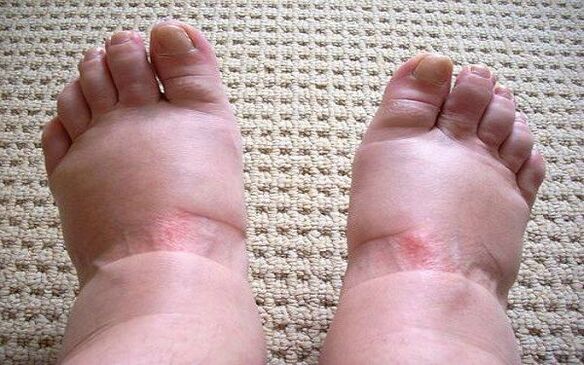
EdemaThey are also included in the symptoms of this disease and can appear in its early stages. UsuallyThe swelling varies in severity in different legs, since completely identical violations are rare. Varicose veins in the legs should be distinguished from edema in heart failure.
Itching- one of the most common symptoms after pain. It can also occur in the early stages, but is most often seen in stages 2 and 3 of the disease.
Why itchy feet with varicose veins?
theassociated with vascular wall expansion and nervous system response to tissues. Due to the expansion of the vein, it presses on the surrounding vessels and capillaries, which can destroy them and the nerve endings transmit these sensations as itching, otherwise the effect on the nerves will be immediate.
It is worth noting thatthe itching will be internaland most of the time he will not bring relief when he tries to influence him by external means.
What do varicose veins look like on the legs?
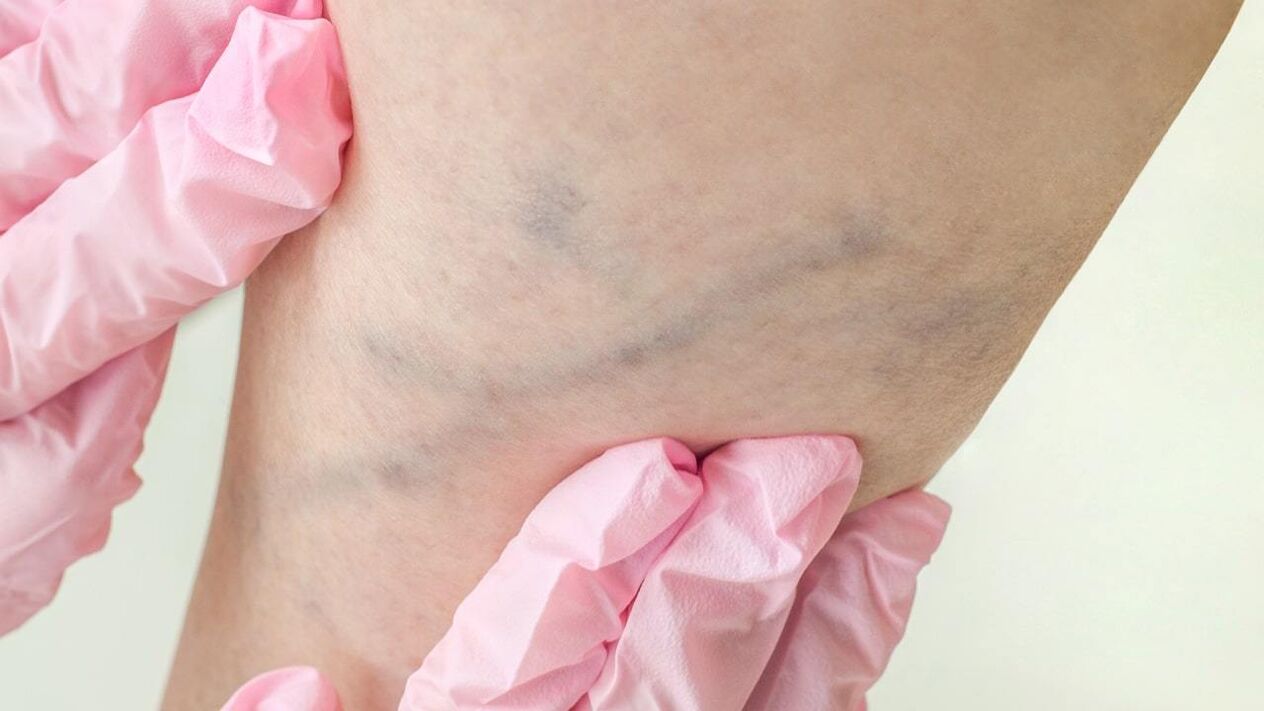
You need to know the answer to this question and have some ideas about the disease so that you do not panic in time and start treatment for a non-existent disease.
In addition to physical discomfort, the disease is also manifested by external signs:
- Thin blue grid on the legsThis is not a cause for panic, as it symbolizes the defeat of superficial vessels, but if it increases in area, becomes brighter or begins to protrude, this is a direct route to an appointment with a specialist and a lifestyle review.
- Bruises and bruisesmay indicate vascular damage and subcutaneous bleeding from it, this is due to a sudden load on the veins. Usually this symptom indicates the progression of the disease.
- The appearance of red spots on the feet, the peeling of the skin and its thinning speaks of atrophic processes characteristic of the last stages of the disease.
Prevention and treatment of varicose veins
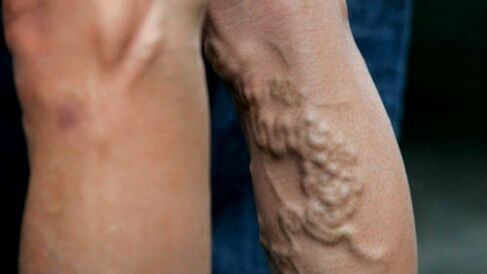
The main actions and procedures for the prevention and treatment of varicose veins:
- Recommendedmove activelyevery day. Walking, yoga and running will be very useful sports for the health of the veins of the lower extremities.
- Prolonged standing increases the stress on the muscles and veins.
- Avoid standing cross-legged, compresses the veins and damages the blood circulation.
- Do not get too carried away with hot bathsand saunas, prolonged exposure to high temperatures affects the tone of blood vessel walls.
- Do not wear tight pants, prefer loose clothing and comfortable underwear.
- Bad Habits, and especially smoking - adversely affect the tone of the walls of blood vessels.
- Light foot massageis a good way of prevention.
- Permanentspecialist visitwith an existing problem is also necessary.
Prevention of varicose veins in women
- Pay attention to the hosiery elements of your wardrobe. Court feesAvoid socks and stockings with too tight elastic bandspulling the leg.
- The choice of shoes should also be taken seriously:High heels should not be worn daily, also be careful to choose shoes with straps and ropes, especially at the ankle.
Varicose veins treatment
The treatment must beunder the supervision of a venologist. After laboratory and organic diagnosis, the specialist determines the degree of the disease and prescribes treatment.
There are several methods of treatment: drug therapy, surgery, exercise therapy.
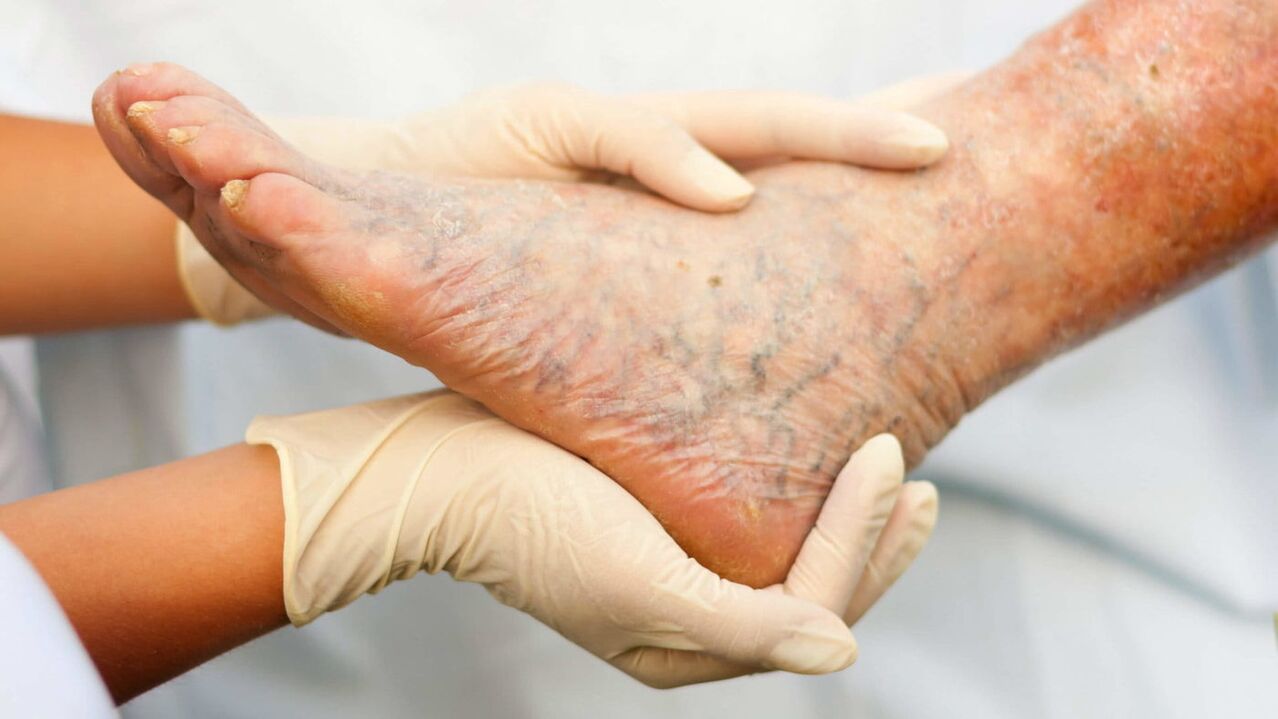
Medical treatment includes:
- Anticoagulants (to dilute the blood).
- Antiplatelet agents (prevent clot formation and improve tissue nutrition).
- Venotonics;
- Non-steroidal anti-inflammatory drugs for severe pain and inflammation.
Surgery includes:
- Laser coagulation method: eliminates surface defects in the form of surface eyes and stars.
- Sclerotherapy: "vein adhesion" with the introduction of special substances and its deactivation from the bloodstream.
- Phlebectomy: surgical removal of a vein.
Exercises for varicose veins in the legs
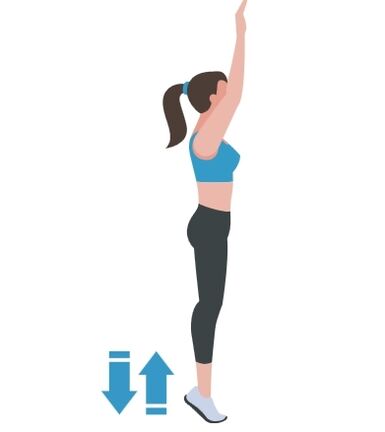
Uniform physical activity and exercise help to treat varicose veins.
- Upright position, legs open shoulder width apart, arms placed along the body.We get up on our toes, stay in this position for 2 seconds and fall sharply on your heels.
- In an upright position, rest your hands on the wall or on the back of a chair, roll from the heels to the toes and vice versa for 2 minutes.
- A useful exercise would bewalking in his place, the socks do not come off the floor. Also usefulwalking on toes or heels.
- Lying down, lift your legs and runbicycle movement.
- Seated position: Alternativebend and untie the legs, by foot.
Folk remedy for varicose veins in the legs
Treatment with herbal ingredientsMany doctors prescribe it in combination with the main drug or exercise therapy. It is also welcome in the early stages of the disease, when the course of the disease has not yet begun.

Which foods are best for vein health?
- Nutmeg. It is welcome as a dietary supplement, decoctions and tinctures.
- Lemon: tinctures, lemonades, oils.
- Ginger: very useful in combination with lemon, also decoction, tincture, compresses.
- Compresseswith white cabbage, oils, honey in more painful areas will relieve symptoms.
- If oneswollen leg due to varicose veins: a compress of aloe, burdock will help relieve swelling. Combined with this, they give a good result.cranberry decorations, wild rose, cumin, thyme, oregano.
Folk remedies for varicose veins in the legs contribute to a speedy recovery and do not give complications that can lead to drug treatment.
The most important thing in treatment is to understand that in advanced cases, folk remedies do not give a strong effect, thereforeyou need to consult a specialistand do not choose the treatment yourself.
If this disease is present in an elderly person, then they will need help to properly perform the exercise therapy (which will be an integral part of the treatment), as the exercises may differ for the elderly.
Likewise, it is necessary to choose correctly and in a timely mannerdrug treatmentto avoid additional complications in the body. For example,the result of inappropriate treatment may be superficial and deep vein thrombosis, resulting in the development of severe inflammation and even necrotic processes, food ulcers that heal for a long time.
To avoid dangerous complications, seek the advice and help of specialists, especially if you can not independently control the treatment and follow all the necessary recommendations.














































